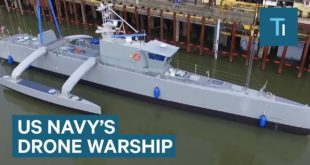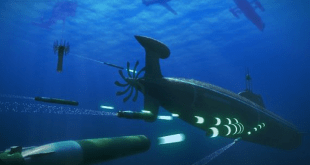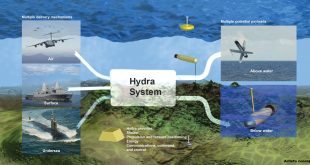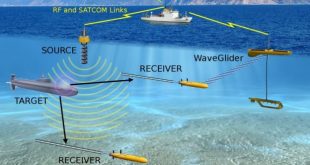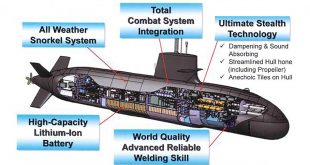The world’s shipping industry is experiencing strong growth, which is expected to continue. Ships are getting larger and faster, sea-lanes are becoming more crowded, and crews are increasingly relying on electronic navigation systems to operate in this environment . The newly proposed concept of e-Navigation will improve safety, security, and …
Read More »Race to develop Deepsea manned Submersibles for mineral exploration and Naval Surveillance
The mineral scarcity and rising prices of gold, copper and rare earth minerals is creating great interest among many nations for deep ocean mineral mining. The oceans, which cover seventy percent of our earth’s surface are believed to be able to satisfy our need of minerals like gold, copper, silver, …
Read More »Propulsion motors are enabling stealthy warships and submarines propelled with an electric propulsion system
Navies of various countries have announced making their warships and submarines propelled with an electric propulsion system. Instead of driving the ship’s propellers directly, diesel engines turn electric generators, which in turn power electric motors that drive the propellers. This arrangement enables diesels to be placed away from the shafts and …
Read More »US, Russia, and China are developing next generation nuclear submarine fleets, other countries are also mastering nuclear submarine technology
A nuclear submarine is a submarine powered by a nuclear reactor. The performance advantages of nuclear submarines over “conventional” (typically diesel-electric) submarines are considerable. Nuclear submarines are more powerful than diesel-powered submarines because nuclear reactors powering them can run for years without the need for refuelling. Nuclear propulsion, being completely …
Read More »Cyber attacks as big a threat to warships as missiles and torpedoes, Navies develop cyber security policy and risk management
The maritime sector is on the verge of a digital disruption. As digital transformation of the maritime sector is gathering momentum that will have a major impact on operations and existing business models, simultaneously the threat cyber attacks is emerging. Further the sector’s infrastructure will be exposed to more and …
Read More »Countries plan Unmanned Warships conducting air defense, anti-ship and anti-submarine missions
A warship or combatant ship is a naval ship that is built and primarily intended for naval warfare. Usually they belong to the armed forces of a state. As well as being armed, warships are designed to withstand damage and are usually faster and more manoeuvrable than merchant ships. Unlike …
Read More »DARPA’s Blue Wolf developed fast, efficient underwater vehicles (UUVs) with energy, hydrodynamic lift, and drag-reduction technology breakthroughs
Unmanned underwater vehicles (UUVs) have inherent operational and tactical advantages such as stealth and surprise. UUV size, weight and volume are constrained by the handling, launch and recovery systems on their host platforms. Mission performance typically sets the range, endurance, speed, and depth requirements, however the UUV range is limited …
Read More »DARPA Hydra developed a distributed undersea network of UUVs and UAVs able to operate independently for weeks or months
Today’s naval forces rely primarily on highly capable multifunctional manned platforms, such as ships and submarines. Even the most advanced vessel, however, can only be in one place at a time, making the ability to respond increasingly dependent on being ready at the right place at the right time. With …
Read More »DARPA’s TIMEly to build Undersea Network Architecture for situational awareness and command and control to dominate in multi domain conflicts
The Defense Advanced Research Projects Agency (DARPA) is soliciting innovative proposals in maritime communications with an emphasis on undersea and cross-domain (above sea to below sea and vice versa) communications. The Defense Advanced Research Projects Agency wants to build an undersea network so that the military can have situational awareness …
Read More »Countries plan high endurance and stealthy diesel-electric submarines equipped with batteries
Naval Warfare depends a large extent on lethality and survivability of submarines, its principal weapon, therefore Navies have been researching new ways to make them quieter and increasing their underwater endurance. Propulsion system plays an extremely important role in the functioning of a submarine for the completion of its desired …
Read More » International Defense Security & Technology Your trusted Source for News, Research and Analysis
International Defense Security & Technology Your trusted Source for News, Research and Analysis





